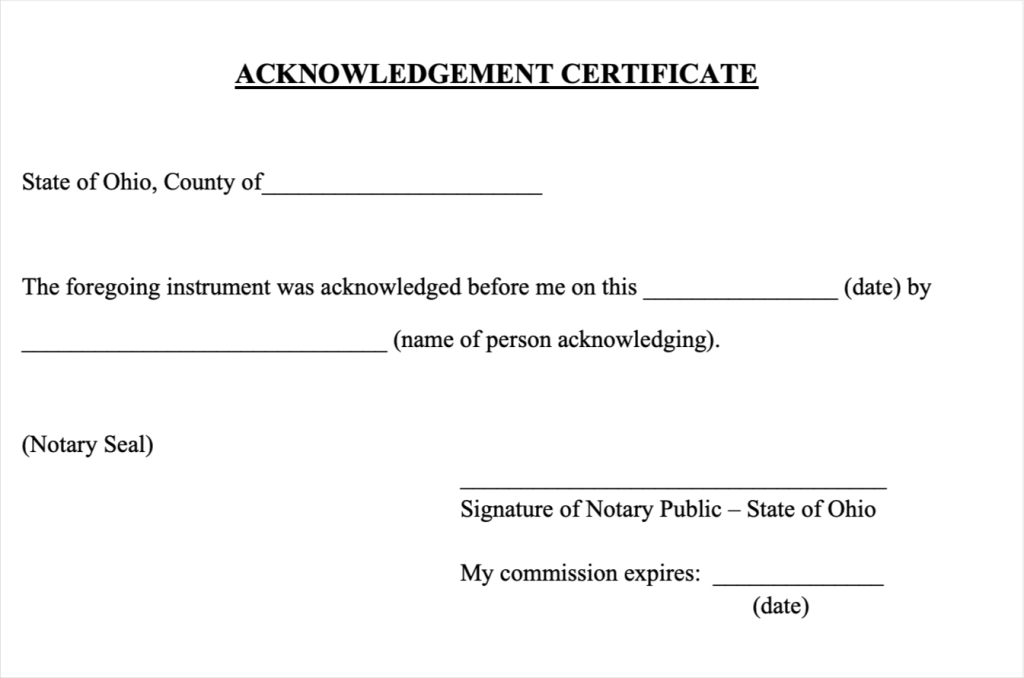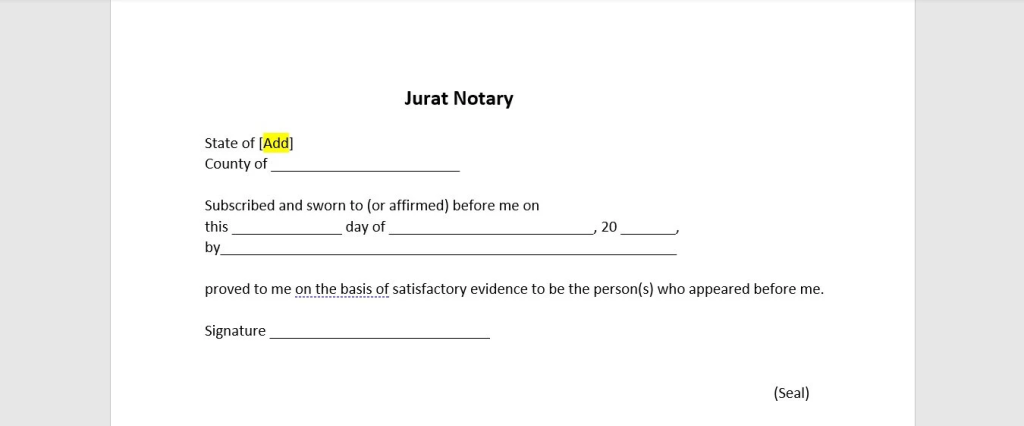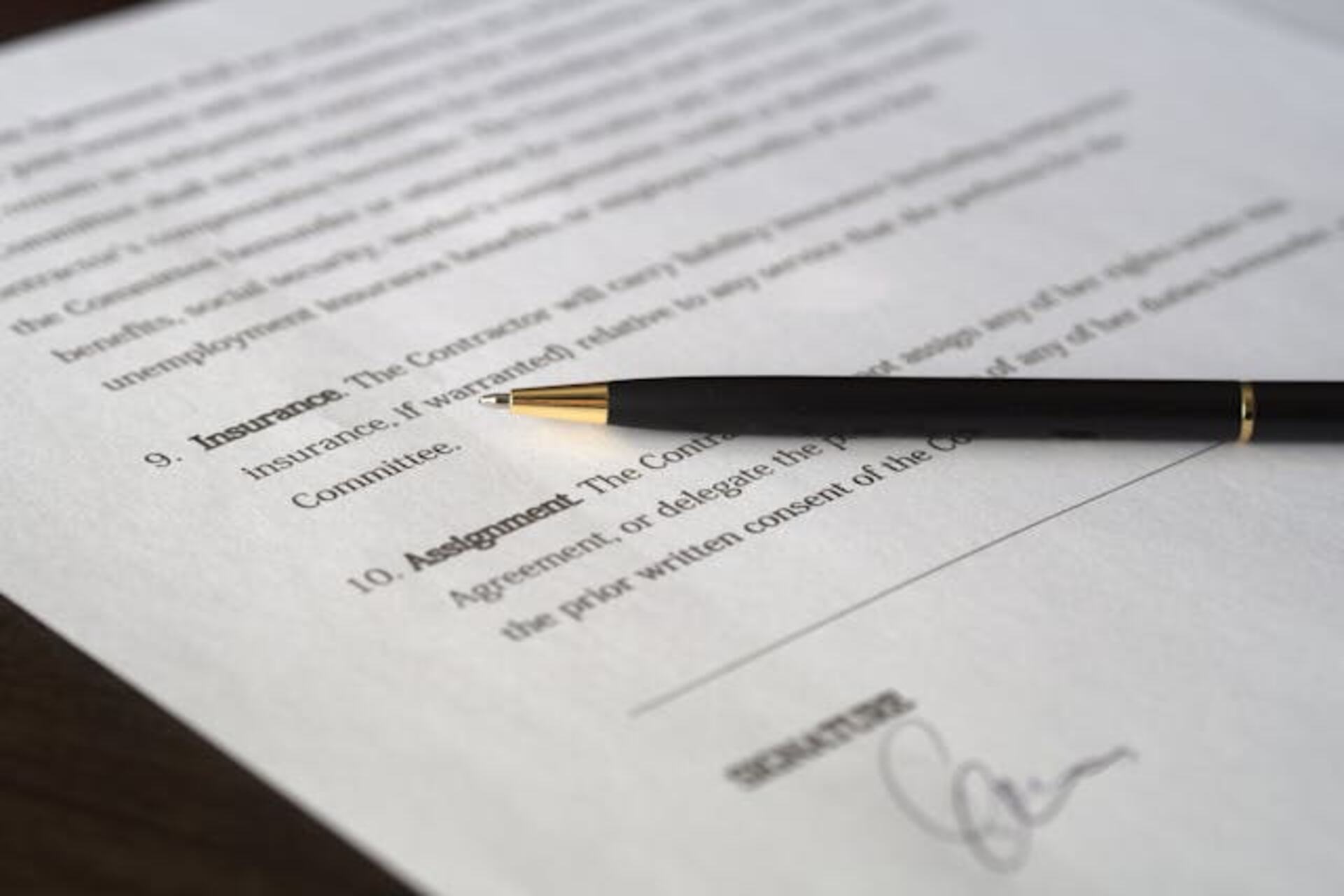By definition, a notary public is a person authorized to perform acts in legal proceedings and affairs, in particular in witnessing signatures on important documents. Essentially, a notary is someone who can validate and witness live signatures to make them ‘legal’. While it sounds (and is) straightforward, it’s a vitally important step in validating and authorizing documents.
An essential tool in the notary’s toolkit is their signature block. In this guide, we’ll dive into what the signature block is, why it’s important, what should be included in the notary block, and so much more.
What Is a Notary’s Signature Block?
Essentially, a notary’s signature block is the cumulative component of their signature and seal that validates the document. The block typically includes a signature (often a wet signature), the printed name of the notary, the notary seal, the commission, and the commission expiration date. We’ll go into these components throughout this guide, but each part that makes up the block is crucial for legitimizing the document.
Why Is a Notary’s Signature Block Important?
A notary’s signature block is important because it legitimizes a legal document – the notary block, which is the certificate or statement of authenticity that the notary places on the notarized document, holds a lot of weight.
A notary public will typically authorize the document at the bottom, near the signatures. The signature block will typically include the name of the notary, the location where they are authorized as a notary, the date of the signing, and multiple statements about the signatures. Without a notary, signatures can legally be questioned. The block on a document confirms that the notary public did due diligence when reviewing the notarized documents and signatures and confirms the authenticity of the signatures.
This is a crucial step in preventing fraud and mitigating risk. For example, a notarized purchase agreement between two private parties can quell legal disputes before they even begin – a notarized document is proof that all parties were aware of the terms and entered into the agreement willingly.
How Do I Create a Notarized Signature Block?
To create a notarized signature block, you need to ensure that your document is prepared, find a notary public, and ensure that the proper components of the notary block are included (which we will go over below). Here’s a step-by-step guide:
Prepare the Document
Before you can have a notary public authorize your document, you need to prepare it so it’s ready to sign. As simple as that may sound, not having a finalized document happens more than you think. Do a final review of the document to ensure the terms are correct, there are no missing fields, and the correct signatories are identified.
Verify the Signer’s Identity
Whether you’re the notary public or another agreement member signing a document, it’s crucial to verify all signers’ identities by reviewing a government-issued identification. This is a requirement for the notarization to move forward. When a notary public validates the document, it also validates that the identity of the signers is accurate and represented truthfully.
Include the Notary’s Signature
Just as important as the various parties’ signatures on the document is the notary’s signature. Without it, the notary authorization is void. The government entity individually authorizes the notary to sign off and validate documents. While it is on behalf of a governing body, the individual signature is crucial to make the document legally binding. It also validates that the individual notarizing the document took the proper steps when reviewing the document and the identities of the signatories.
Apply the Notary’s Seal
Another crucial part of the signature block is the seal. This is the identifying information of what governing body commissioned their notary authority. This official government seal should be included on every document that’s notarized.
Note the Commission Expiration Date
Notaries are not authorized indefinitely and their commissions should always include an expiration date. Part of the seal and the broader notary block will include when their commission expires and is a crucial part of validating their notarization authority. If a notary’s block does not include an expiration date, it may be fraudulent.
These are the major components of a signature block, but local requirements may vary from jurisdiction to jurisdiction. You’ll often see statements of authenticity that validate the identities of each party or statements that confirm parties entered the agreement on their own free will. For templates and examples of notary signatures, check out Signaturely’s notary signature guide here.
What Should Be Included in a Notary Public Signature Block?
A signature block should include the name, signature, steal, commission number, commission expiration date, and often a statement of authenticity. Without these key components, the document may not hold up in court. Let’s take a closer look at each of these components.
The Notary’s Name
As we mentioned above, the name of the notary is just as important as the name of those signing the legal document. The name must be legible and clear to identify the individual notary that validated the document. Without a name, the notarization can be void.
The Notary’s Signature
Next, the block should include the notary’s actual signature. Oftentimes, the remaining components of the signature block are imprinted on a rubber stamp, but in most cases, the notary will physically sign the block. The signature confirms that the notary validated identities and that the document is legitimate. You can learn more about wet signatures and notarization here.
The Notary’s Seal or Stamp
Remember, the seal or stamp identifies the notary’s commission, where they can notarize, and generally establishes their authority. This will often include location information and their commission number.
The Commission Number
As we mentioned above, the commission number is typically part of the official seal. The commission number is a public number that uniquely identifies the notary and is tied to their certification. It will verify their notary credentials and is also directly linked to the expiration date.
The Commission Expiration Date
Finally, the signature block should always include the commission expiration date. Always pay attention to the expiration date, as this is a crucial component of authorizing a document. If the commission expires at the time of notarization, the document may not be valid.
How Can I Ensure My Signature Block for Notary Is Legally Compliant?
To ensure your notary block is legally compliant, you must ensure that you are up to speed on local and regional notarization laws, make sure that the commission is current and valid, and place the seal and signature block correctly on the document. Here are the key points to know:
Check Legal Requirements
Notary laws can differ from state to state and country to country – it’s important that you fully understand all of the local and regional requirements to be a notary. Moving from state to state, or even town to town, you may have different requirements.
Verify Commission Validity
A simple mistake that may cost you big is not having a valid notary commission. Always check the notary commission expiration date, whether you’re having a document notarized or you’re the one notarizing. If you need a document notarized and the commission isn’t valid, it can void the entire document. If you’re the notary, it can lead to legal consequences.
Place the Seal Correctly
The seal, which includes the commission number and expiration date, should always be near the notary’s signature. Placing the seal on another page can cause issues with the validity of the notarization.
Include All Necessary Details
While an obvious point, it’s important to reiterate the importance of including all of the necessary components of the signature block, such as the name, seal, commission details, and expiration date. If even one of these details is missing, it can invalidate the notarization. For guidance on creating legally-sound, notarized documents, check out Signaturely’s contract resource here.
What Are Common Mistakes to Avoid in Notary Signature Blocks?
Start the first sentence with ‘Common mistakes in signature blocks include…’ and list typical errors such as missing information, incorrect dates, illegible handwriting, or improper seal placement. Provide tips on how to avoid these mistakes to ensure the signature block is valid.
Electronic Notary Signature Blocks: What You Need to Know
While we’ve gone over several key mistakes to avoid already, here’s our list of common mistakes that you should avoid. Whether you’re in need of a notary or you’re notarizing a document, here’s what to look out for.
Missing Key Information
We can’t stress this enough – missing key information from a signature block can void the entire document. Keep the key components (name, seal, commission expiration/commission number, and signature) in mind, and always ensure the key components are on the document before walking away.
Incorrect Dates
If the notarization doesn’t have the correct date, it can create a fair bit of legal issues if the contract or document is ever disputed. Ensure that the correct date is included in the signature block every time.
Illegible Writing
While this issue isn’t as common as it once was, it’s still important. If the notary doesn’t have a stamp for the standard parts of the signature block, ensure that the writing is clear and legible. This is extremely important for the commission details, including the number and expiration date, as well as the name of the notary.
Improper Seal Placement
We’ve already mentioned this one, but seal placement is crucial for the validity of the notarization. Place the seal near the notary signature, often on the bottom of the page where the primary signatures of all parties are located.
Notary Signature Block Examples
More and more business is done online, over the internet. If you’re authorizing a sales agreement with someone on the other side of the world, chances are you’re not getting an in-person signatory.
However, electronic notarization holds the same weight and authority as an in-person notary. Fortunately, Signaturely makes electronic notarization a breeze, ensuring compliance with the ESIGN Act and UETA. The same components of an in-person signature block apply to a digital one – it should include a valid name, digital signature, seal, commission number, and commission expiration date. Examples of signature blocks can help you understand the proper format to use, whether you’re in need of a notary or you’re just starting out as a notary yourself.
There are a few common signature blocks depending on the document type and notarization type. An acknowledgment signature block includes all of the standard fields that we discussed above, as well as an acknowledgment statement (typically a statement affirming identity and acknowledgment of what they are signing). Some states are oath or affirmation states, requiring this language in notary statements.

A Jurat Signature block includes a statement that affirms the document’s accuracy rather than affirming identity. It’s also common to see both statements in signature blocks.

How to Correct Errors in a Notary Signature Block?
To correct errors in a signature block, draw a single line through the error, initial the change you’re making, and add a clear note explaining the change. Much like learning grammar in school, there are some specific rules you need to follow when making a correction and annotating that correction.
A single line makes the correction clear while maintaining the original content. It’s important to initial the change as all corrections should be tied to an individual. Make a note on the correction concisely without changing the original content or materially changing the agreement.
What Are International Considerations for Notary Signature Blocks?
Signature blocks may require adjustments based on the country’s specific notarization laws and regulations when dealing with international notarized documents. An apostille is a validation added to a document that ensures that
When dealing with international documents, signature blocks may require specific elements like apostilles to validate the notarization in foreign jurisdictions—research local laws to ensure compliance and consult a professional if needed.
FAQ
Yes, a statement can vary from state to state, so it’s important to familiarize yourself with local requirements.
While there is no required format, utmost notary public statements typically include formats that promote best practices and ensure that the crucial elements are included.
No – a ‘notarized’ document without a signature block isn’t actually notarized. In fact, the document can be deemed void without it.
An acknowledgment block focuses on verifying identity, while the jurat block requires an affirmation of the document’s accuracy.
No matter how you’re signing your document, it’s in your best interest to have a notary public validate your official documents.
